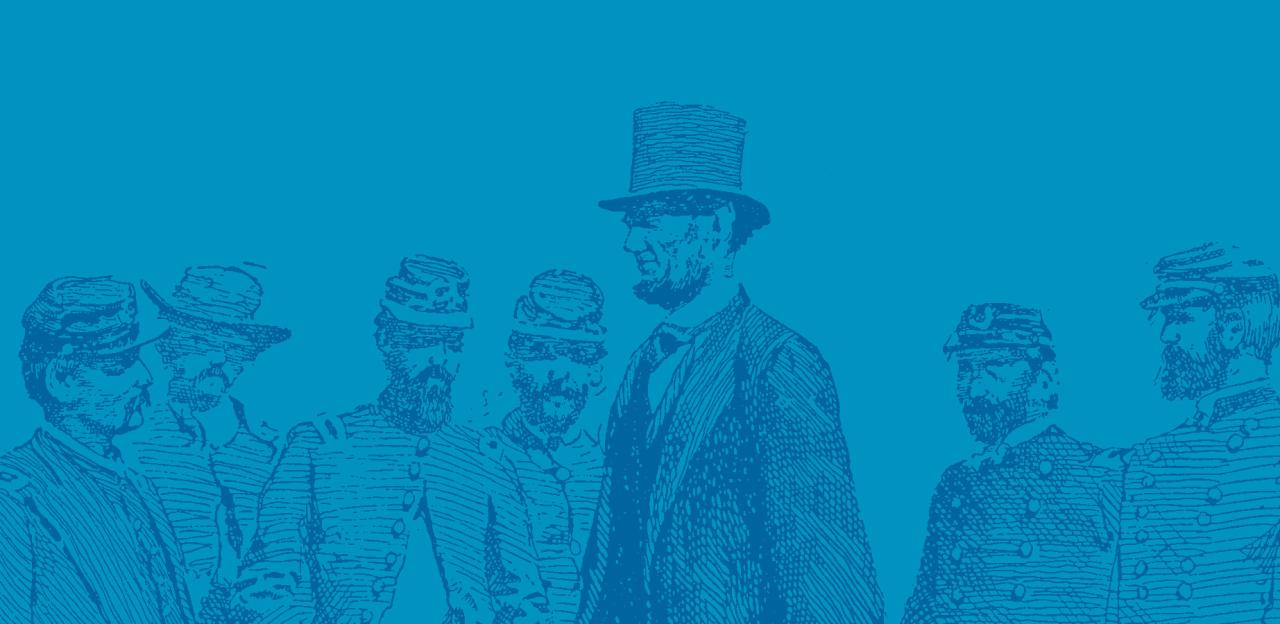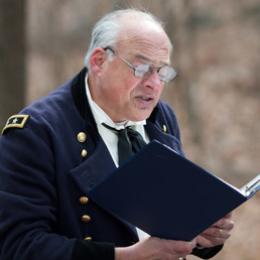Ten Classroom Strategies for Teaching the Civil War

For more than 32 years, I prided my classroom instruction in history in deliberately crafting a dynamic and hands-on classroom environment. In a curriculum that is a mile long and a quarter-inch deep, it is difficult to teach the Civil War in a meaningful way. The longer I taught, the more I came to see my role as a teacher as being more of a “guide on the side," being an enthusiastic booster of history by removing myself from the position of didactic “sage on the stage.”
In this context, your students can be transformed into historians who teach one another. Here is a chance to be creative while addressing state standards.
With an eye on the calendar and the ten month march of a school year, let me share with you ten successful classroom strategies that my colleagues and I have utilized in teaching the American Civil War.
I suggest that teachers consider using many of these strategies after they have ensured that whatever relevant standards students must know have been front-loaded as you start your unit on the Civil War. For that reason, I lead off with the time-efficient Civil War foldable activity, which is a great place for you to secure the essential knowledge of the Civil War era matched to your state standards. After employing the foldable strategy and securing that your students have the essential Civil War era knowledge they need, I encourage you to consider trying the other activities with your students.
All of these classroom strategies are hands-on and can be completed either by individual students or in two member teams. Upon completion of the activity, students should be asked to write a Reflection/Evaluation Journal Entry for assessment purposes and also to provide you with feedback as to how the activity was received and what value the students saw in it.
1) Civil War Foldables
Provide students the Civil War Era Foldable Template (available to download below) and walk the students through how to complete it and fold it for use. This activity can be done in the classroom or at home and you can utilize textbooks or various web sites to have students complete the foldable. This is where you make sure that you cover your state standards. You can assess the foldables in class after students complete them and provide to them didactically specific information that you need to ensure is being covered.
2) Civil War Personalities on Facebook, Twitter, and Instagram
Have students pull from a hat (kepi or forage, if possible) a list of names of Civil War era personalities and have them design a Facebook page, Twitter account, and Instagram page for that person. Have students use the same formulae that they would have in creating their own personal page. If a student, for example, has Robert E. Lee, then the student would need to list his friends or followers, like Stonewall Jackson and Jefferson Davis, etc. Students could also, on behalf of their Civil War personality, “Like” ideas, themes, and pop culture elements of the time period.
Upon completion, students present their social media page to the class. For assessment, teachers can grade on a rubric as the student presents. While each student is presenting, classmates should be taking notes or complete a 3-2-1 Notecard Activity (see Number 5) for each page presented. Teachers can always reinforce the information that they deem essential based on the state standards.
3) Heroes on a Cereal Box
Have your students create a breakfast cereal box in memory of a randomly assigned Civil War personality. Students may use an actual, preferably empty, cereal box that they can apply paper to, covering up the current product with the transformed images of the new product they have created. Each cereal box should have a name, something like, “Custer’s Clusters” or “Jeff Davis Munchies.”
On the sides of the box where one normally finds the nutritional information, students should craft a timeline of key moments in this person’s life. On the back of the box should be some kind of game, like a crossword puzzle, or a word search that relates to the Civil War.
When the project is complete set the boxes up around the classroom as if they were a museum exhibit and ask students to move around the room and take important notes from each box. Teachers can use this same time to assess the completed boxes.
4) Civil War Tableaux Vivant
This is best employed for a group of students. Provide students a list of images (photos or paintings). Again, you can have student groups select from a hat. Student teams should research the painting or photo prior to presentation.
In the front of the classroom, the teacher should sketch out a frame (strips of cloth hung from the ceiling work well) and inside this frame students should pose. If a particular background is needed then the team of students should create that. Students should dress in costume (within reason to approximate the image). After the tableaux vivant is presented to the class, the student team shares an image of the painting or photo that they are replicating to the class on a projector and at that time provide pertinent information about the artist, photographer, topic, etc.
5) Civil War In4 Video Presentations
Assign each student one of the American Battlefield Trust's In4 videos. Give students a week to watch the video as a homework assignment before they present their video to the class. Each student in the class receives a 3 x 5 note card for each video presented. For each video, they will complete a “3-2-1 Note Card” based on their peers' presentations, noting the following on the card:
- Three important things they learned from the presentation.
- Two things about which they would like to know more.
- One thing from the video that will stick with them.
- On the reverse side of the card, students should record the main idea of the presentation.
Teachers can utilize these cards as an assessment tool or make each student submit a test question based on their in4 video.
Timing will depend on if the class is in a 90 minute block schedule, every other day format, or the more traditional 45-50 minute each day format. If you have 30 students in a class you will need to manage for each students four minutes for the video, a minute prior to the video for participant introduction, and then a few minutes after each presentation is over for clarification, Q & A, etc. It will probably take a week’s time of instruction to complete one full class of 25-30 students.
6) Student-Generated in4 Video Presentations
Teachers can put a different spin on the In4 concept by having students select topics that are not presented by the American Battlefield Trust’s In4 video collection and make their own videos to share with the class utilizing the same model as the previous In4 strategy.
7) Civil War Era Bumper Stickers
Have students imagine what a bumper sticker that might have been seen on the back end of a wagon. Bumper stickers might read: “Richmond or Bust,” “My son is a brevet officer in the Army of Northern Virginia,” etc.
8) Political Cartoons
Have students create their own political cartoons of some aspect of the Civil War. Provide samples of cartoons created by Thomas Nast and others that they can use as models to follow. If students are afraid of their lack of artistic ability it is perfectly fine to draw stick figures. Content of the cartoon should be germane to some aspect of Civil War history.
9) Reel History vs. Real History: Hollywood and the Civil War
Using any number of Hollywood films about the Civil War, form the class into teams and assign each team a Hollywood interpretation of the Civil War that they must watch. Students then pick one scene from the film that they can critique as either being historically accurate or inaccurate and share that scene with the class. They must provide evidence of their findings, submitting a source list of five resources from where they got their information.
10) Historical Heads
You can employ the Historical Heads activity in a number of ways. If you have students reading a memoir account from the Civil War, like Company Aytch, then based on their reading students fill in the Historical Head template with the thoughts, visions, and ideas of the author. Students need to list or preferably draw ten things inside the silhouette, number each image, and on the back write several sentences identifying each image and its importance noting the page number from the book where they got this information.
This activity could also be used with historical fiction such as The Killer Angels or The Red Badge of Courage.
Another way to work this activity is to employ, “Dueling Historical Heads.” In this activity the two Historical Head silhouettes face each other; for example Abraham Lincoln facing Jefferson Davis or Ulysses S. Grant facing Robert E. Lee. The premise is the same from above but with more of the compare/contrast approach that is emphasized in the new standards.
Those of us at the American Battlefield Trust engaged in the mission of education hope that you find this material useful as you teach the defining American event of the 19th century and that you and your students thrive as you do so. Every teacher brings to the classroom something of value to teach and the American Battlefield Trust would like to issue a call to teachers to share with us so we may share with other educators classroom strategies and activities that have proven successful in your instruction of the Civil War.



